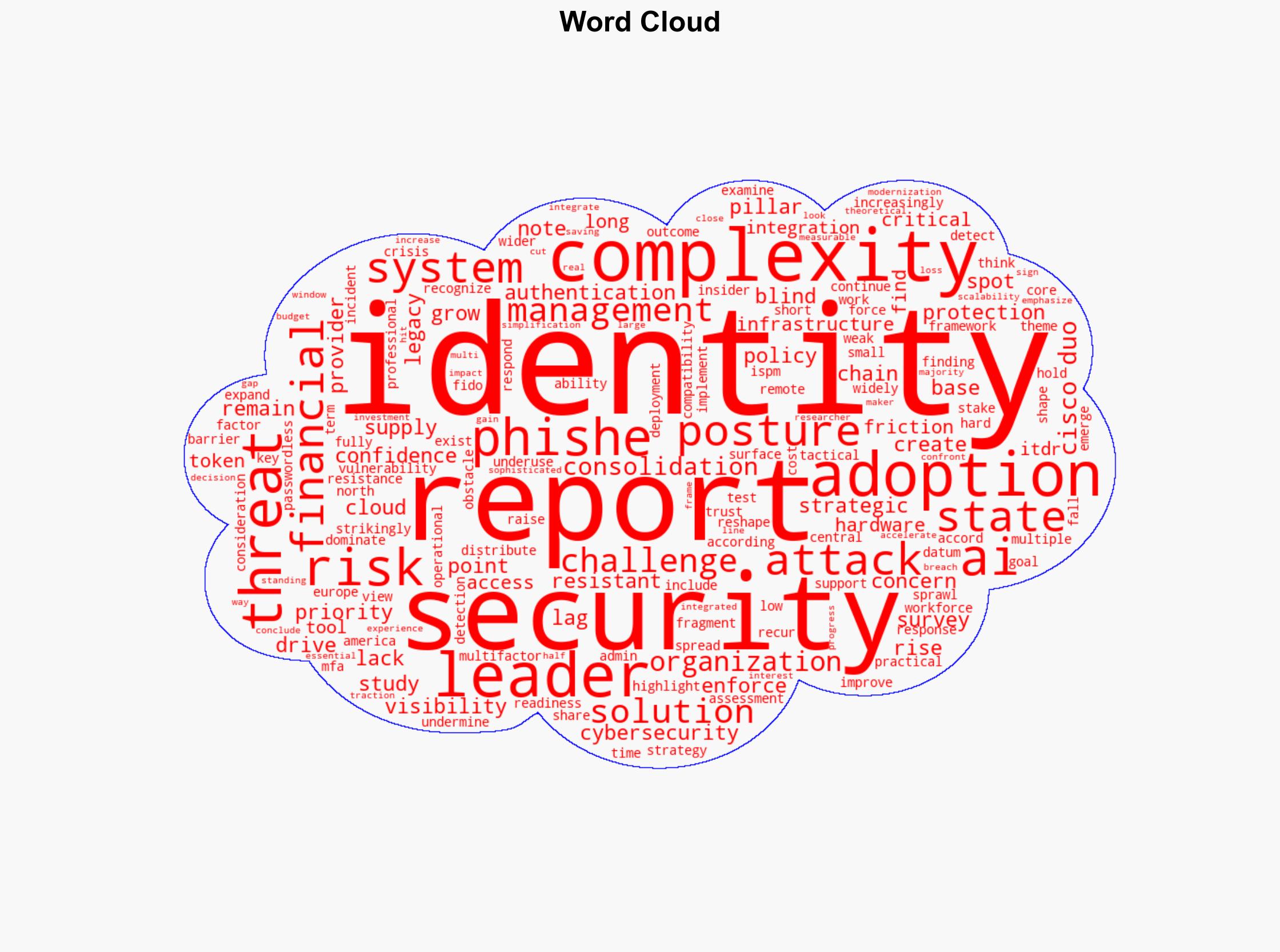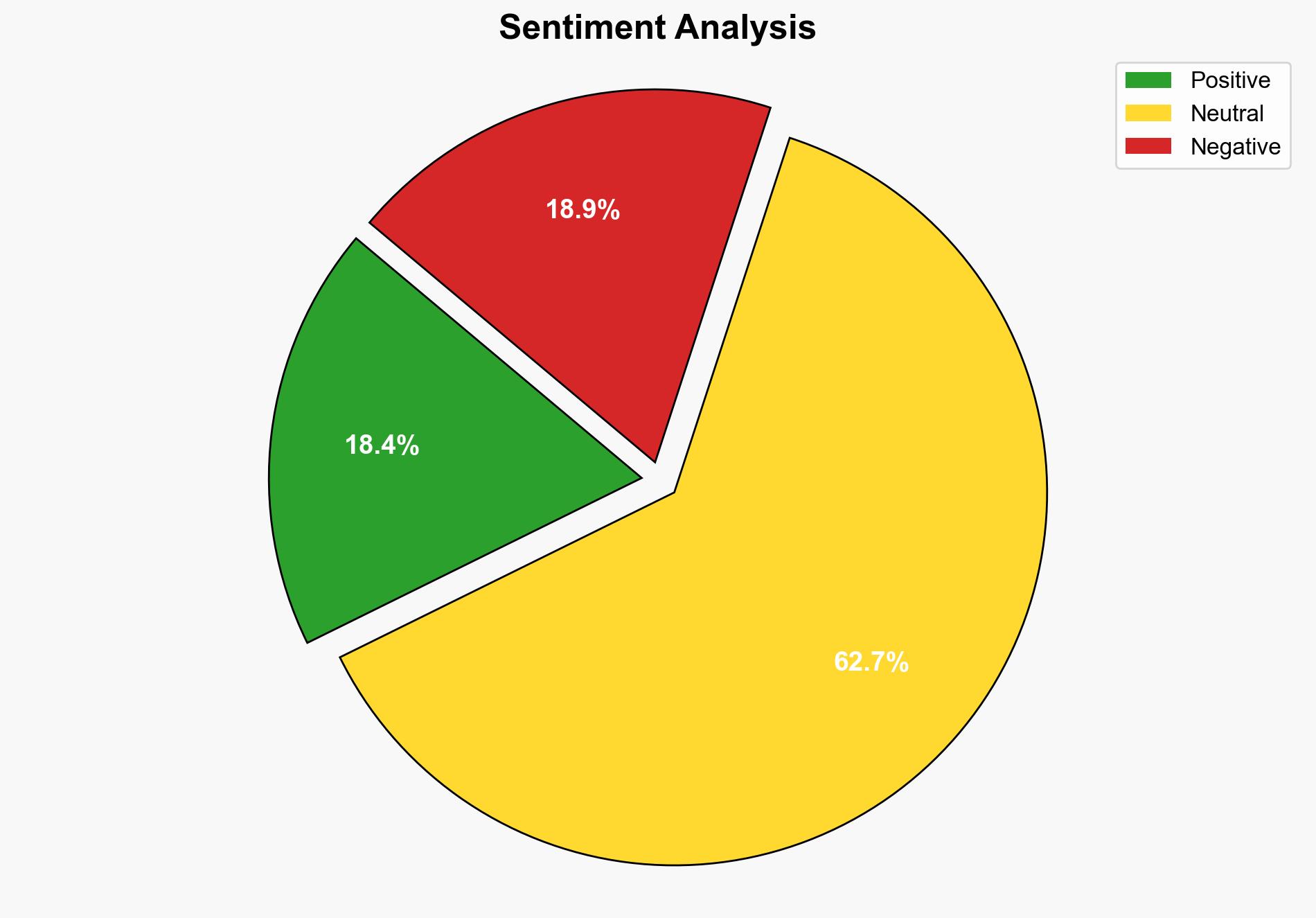Complexity and AI put identity protection to the test – Help Net Security
Published on: 2025-09-02
Intelligence Report: Complexity and AI put identity protection to the test – Help Net Security
1. BLUF (Bottom Line Up Front)
The strategic judgment indicates a moderate confidence level that the complexity of identity infrastructure and the rise of AI-driven threats are significantly undermining current identity protection measures. The most supported hypothesis is that organizations must prioritize the integration of advanced identity security solutions to mitigate these risks. Recommended action includes accelerating the adoption of phish-resistant multifactor authentication and identity threat detection and response (ITDR) systems.
2. Competing Hypotheses
1. **Hypothesis A**: The complexity of identity infrastructure and AI-driven threats are the primary factors challenging identity protection, necessitating a strategic overhaul of current systems.
2. **Hypothesis B**: The lack of trust in identity providers and underutilization of existing identity security measures are the main issues, suggesting that improving trust and optimizing current solutions could address the challenges.
Using ACH 2.0, Hypothesis A is better supported due to the reported rise in AI-driven threats and the complexity of identity systems, which are highlighted as key vulnerabilities. Hypothesis B is less supported as it underestimates the impact of technological advancements and infrastructure complexity.
3. Key Assumptions and Red Flags
– **Assumptions**: Hypothesis A assumes that AI and complexity are the most significant threats, while Hypothesis B assumes that trust and system optimization are sufficient to address identity protection issues.
– **Red Flags**: The report’s reliance on survey data may introduce bias. There is also a potential blind spot regarding the role of human factors in identity breaches.
– **Inconsistent Data**: The report does not provide detailed metrics on the effectiveness of current identity protection measures, which could skew the analysis.
4. Implications and Strategic Risks
The complexity of identity systems and AI-driven threats could lead to increased vulnerability to cyberattacks, potentially causing significant financial losses and reputational damage. The lack of trust in identity providers may exacerbate these risks by slowing the adoption of necessary security measures. Geopolitically, this could lead to heightened tensions as nations grapple with securing their digital identities.
5. Recommendations and Outlook
- Accelerate the adoption of phish-resistant multifactor authentication and ITDR systems to enhance identity protection.
- Invest in workforce training to improve readiness and integration of new security technologies.
- Scenario Projections:
- Best Case: Rapid integration of advanced identity solutions leads to a significant reduction in identity breaches.
- Worst Case: Continued complexity and AI threats result in widespread identity breaches and financial losses.
- Most Likely: Gradual improvement in identity protection as organizations adopt new technologies and strategies.
6. Key Individuals and Entities
The report does not specify individuals by name, focusing instead on entities such as Cisco Duo and identity security leaders in North America and Europe.
7. Thematic Tags
national security threats, cybersecurity, identity protection, AI-driven threats, infrastructure complexity




